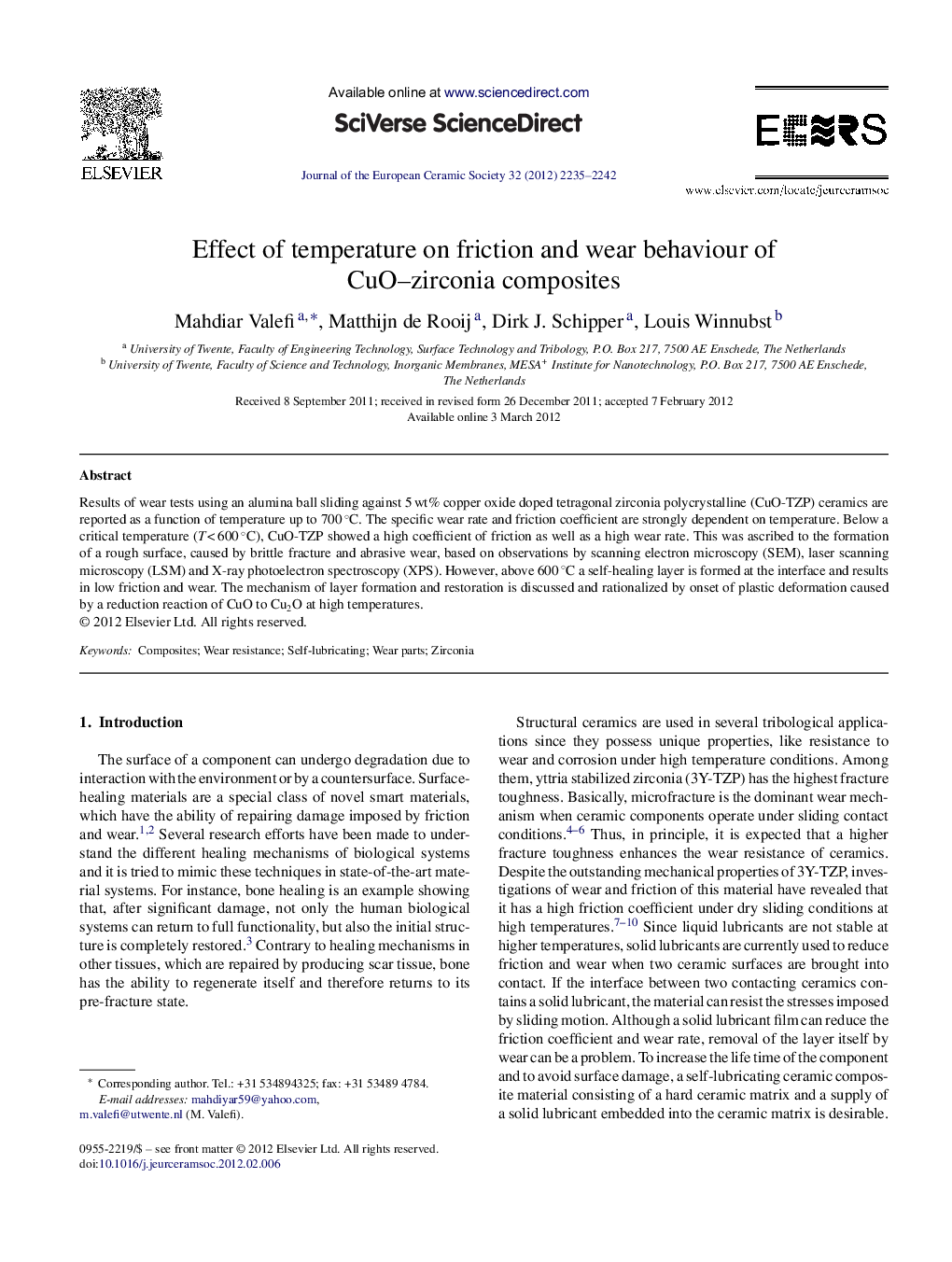| Article ID | Journal | Published Year | Pages | File Type |
|---|---|---|---|---|
| 1475296 | Journal of the European Ceramic Society | 2012 | 8 Pages |
Results of wear tests using an alumina ball sliding against 5 wt% copper oxide doped tetragonal zirconia polycrystalline (CuO-TZP) ceramics are reported as a function of temperature up to 700 °C. The specific wear rate and friction coefficient are strongly dependent on temperature. Below a critical temperature (T < 600 °C), CuO-TZP showed a high coefficient of friction as well as a high wear rate. This was ascribed to the formation of a rough surface, caused by brittle fracture and abrasive wear, based on observations by scanning electron microscopy (SEM), laser scanning microscopy (LSM) and X-ray photoelectron spectroscopy (XPS). However, above 600 °C a self-healing layer is formed at the interface and results in low friction and wear. The mechanism of layer formation and restoration is discussed and rationalized by onset of plastic deformation caused by a reduction reaction of CuO to Cu2O at high temperatures.
